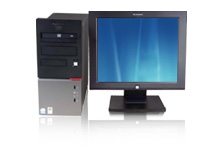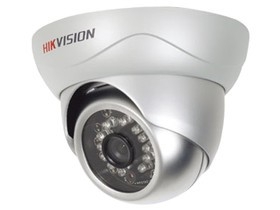Ten Key Points in IT Outsourcing to Optimize IT Decisions of SMEs
Small and medium-sized enterprises often face huge competitive pressure from large enterprises. However, when it comes to IT decisions, it is difficult for growth enterprises to obtain all the things they really want and need under the existing IT budget, so they must try their best to ensure that every penny is spent where it should be, but it is not easy to do so.
When an enterprise encounters a "small year" in business, managers sometimes think that they should increase some investment in IT, but they have to wait until the sales increase. Or despite the investment, the project did not bring the desired results.
In some cases, solutions that drive enterprise technology and business forward may be easily available. But sometimes, there will be some unexpected and more effective optimization strategies. The following 10 methods summarized by Mary Shacklett, President of Transworld Data, may provide some help for optimizing SME technology investment, whether in good or bad times.
1. Pooling resources
Data center hosting service is a popular trend at present, because enterprises of any size are looking for ways to avoid further investment in physical, locally preset data centers.
Users can The server Migrate to leased space in a third-party data center and connect these servers to your central management network. If necessary, employees can even be sent to the location of the hosting machine room to manage and run the applications of these remote servers locally.
More interestingly, users can also pool resources into a data center shared with other SMEs, especially when they are running the same application. It is said that companies that compete in the market are doing the same!
As a result, because the equipment was moved away, the energy consumption and cost of operating the internal data center were reduced. It also reduces the carbon emissions and floor space of the data center.

2. Switch to SaaS mode
Some credit cooperatives and community banks have reached an agreement to lease their data center equipment and IT staff services from the larger party. In doing so, they become a software as a service (SaaS) provider, providing services to small enterprises running the same applications and having the same regulatory and security requirements for data.
For the trustors, the advantage is that they can get a sum of income from small enterprises that help them provide data center funds and technology investment, while for smaller SMEs, they do not need to pay their own money to buy equipment, employees and data centers.
3. Join the user community of IT software suppliers
When improving products, commercial software providers tend to listen to their customers' feedback. This makes SMEs at a natural disadvantage when using standard software to visit supervisors. They must rely on (or rely on) manufacturers to bring enhancements that are conducive to SMEs' business into software products.
One of the strategies to enable manufacturers to hear the voice of SMEs is to become an active participant in the manufacturer's user community. Manufacturers often build such communities to collect opinions and voices on the next step of product improvement. Because it may occupy working time, many enterprises (including large enterprises) will ignore the participation of community activities. SMEs should take this as a once-in-a-lifetime opportunity to ensure that manufacturers have invested to improve software functions related to SMEs.
4. Data center virtualization
At the end of 2012, 51% of global enterprise servers were still not virtualized. Through virtualization technology, hundreds of servers can be reduced to a few. Naturally, the next step is to reduce the floor space, energy consumption and server investment. Everyone knows this fact, but the IT staff of small enterprises are busy dealing with other projects, so they often delay the deployment of virtualization.
Virtualization should not be an imminent project. It can reduce the number of servers, save space and energy instantly, and increase the return on investment accordingly.
5. Consider outsourcing non business critical applications to the cloud
For SMEs and large enterprises, it is meaningful to keep business critical applications under their own direct management. However, other systems such as payroll, human resources and office applications are very suitable for outsourcing to a powerful cloud provider.
The risk of migrating to a cloud service provider should first consider ensuring that the provider can safely store your data, meet your regulatory requirements, and be able to fail over when the cloud fails.
If these requirements can be met and you choose a powerful cloud provider, then you should pay for the service by subscription or on-demand to reduce your software license fees. These savings can be used to invest in other IT projects.
6. Expand the coverage of IT and mobile communication
The deployment cost of tablets and mobile devices is lower than that of laptops, and tablets and smartphones are very suitable for employees who use their own devices for system access and communication. Mobile services can also be ordered, so you don't have to invest in your own T1/T3 communication lines. You will save the cost of telecommunications and personal hardware. Most employees will prefer to use tablets and smartphones.

7. Beautifully designed official website
For a small and medium-sized enterprise, the Internet is their ability to equal large enterprises. A beautiful website can make the company look larger than it actually is, and at the same time, it can gain credibility from partners and customers. If users choose an advanced website design company to design, they may need six figures of money, but once the site is built, users can run and produce their own content.
If you choose to use the website for e-commerce, the six digit initial investment is still far below the continuous cost you will pay for commercial real estate - your customers will be global. The operation cost of websites is lower than that of physical stores, because many website processes are automated. If they switch to online operation, SMEs can improve their income migration and save operating costs.
8. Life cycle management of personal office equipment
The IT department sets the life cycle of most equipment in the data center as 3 to 5 years, and then extends the same time to obtain the return on investment of these equipment. They should also apply this strategy to the personal computing assets of enterprises, such as PCs and laptops, but the process can be greatly improved if there is a "downward cycle" process for these assets. This is how the "downward loop" works:
Give new and configured personal devices to internal users with high demand. Then, after replacement, the old equipment will be idle. Managers can give these old equipment to internal users who have low demand. In contrast, they use the equipment less frequently (less resource intensive). Through this "downward circulation" method, enterprises can extend the service life of a PC or laptop to seven years. This extends the return time of the initial investment and delays the arrival of new investment in the next stage.
9. Increase investment in service touchpoints (telephone, network)
If enterprise managers want to find an innovation that can catch up with competitors, they should focus on improving the contact points with customers. Managers do not need to invest in a CRM system to do this, but only need to apply technology and efforts to Internet based communication, such as chat tools, e-mail, and of course, telephone contact.
When customers need to solve a problem or seek services, they want to communicate with a real person. If the investment of the enterprise can enable customers to continuously improve this experience through the phone or network, the enterprise can make itself stand out from many competitors because they will not do better in this regard. Customers will appreciate this and continue to choose to work with them.
10. Establish high usage standards for software procurement
The usage rate of commercial software purchased by customers is usually only 20%. This is not cost-effective, because the software license fee paid is 100% of the purchase price. Therefore, you should avoid buying software or buying everything that meets all your needs at once. Then try to use the software bit by bit.
![]()







